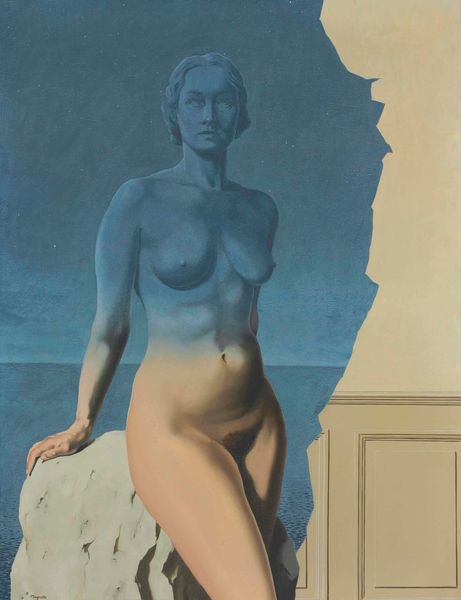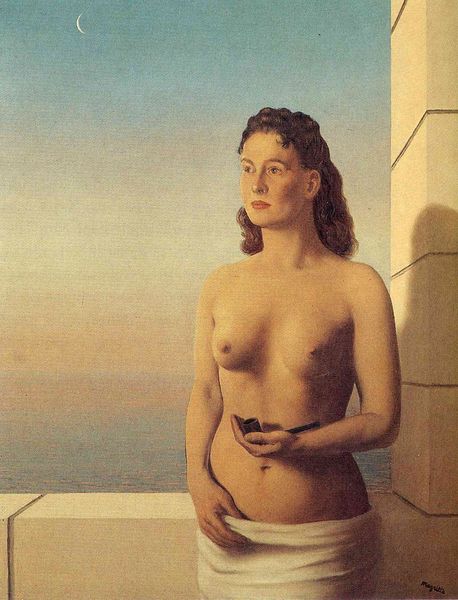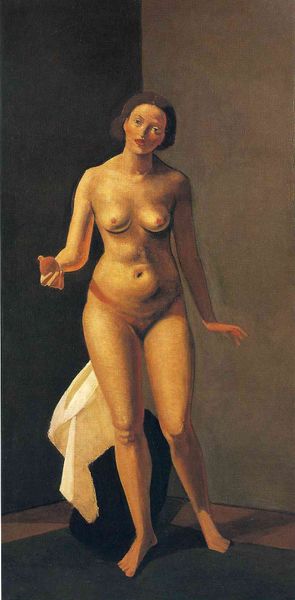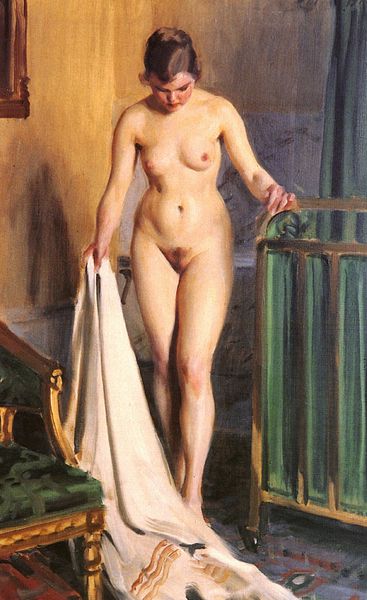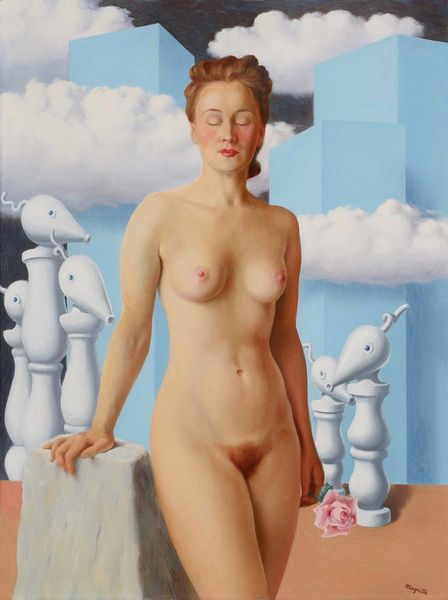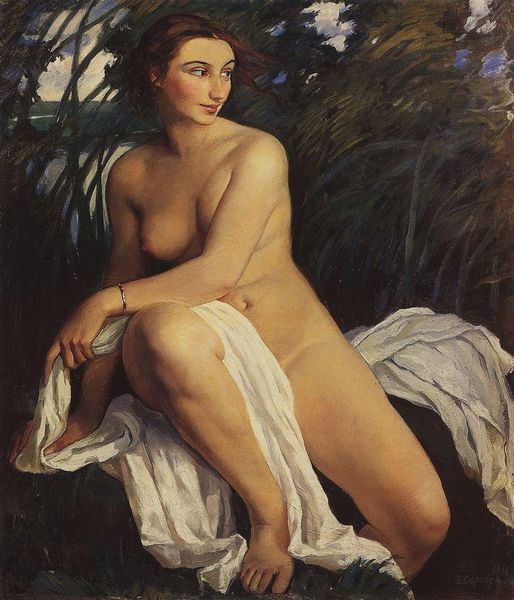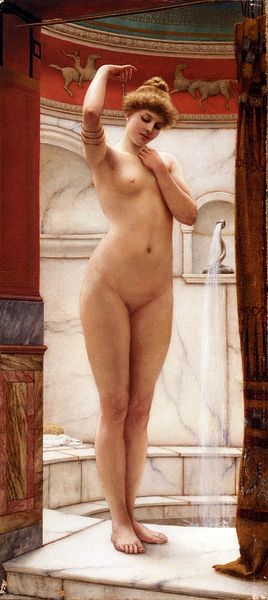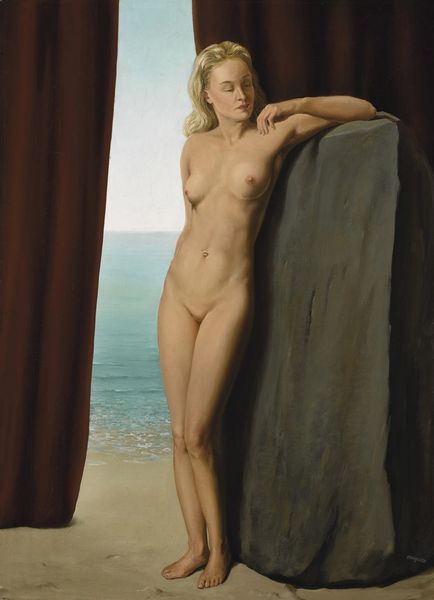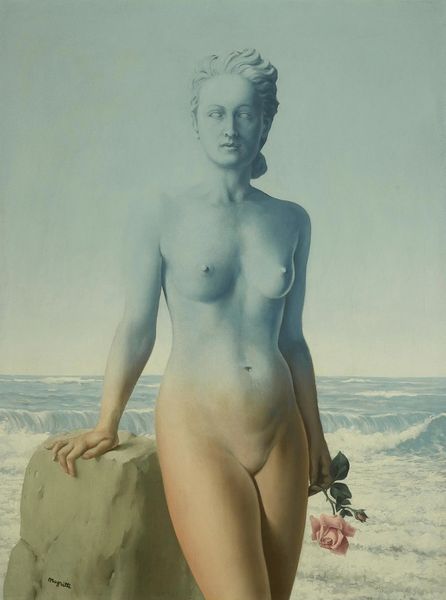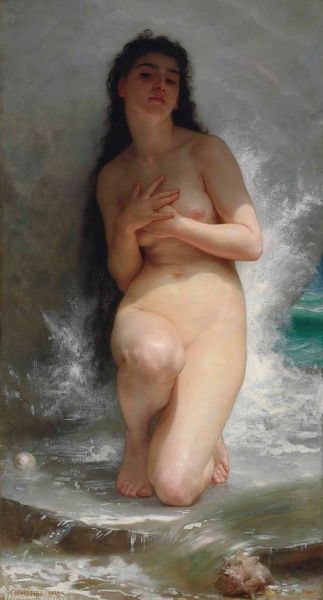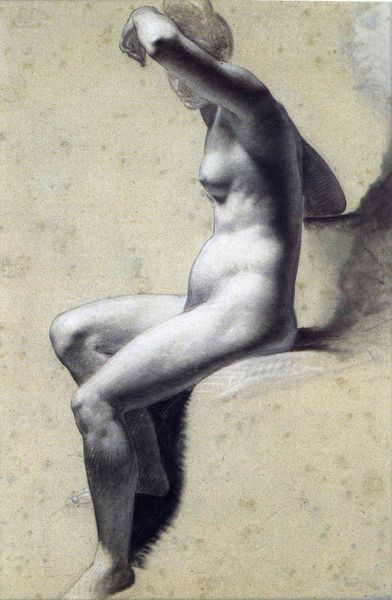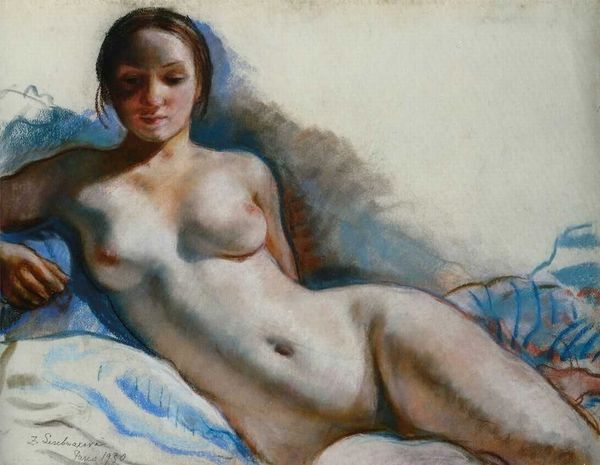
painting, oil-paint
#
portrait
#
painting
#
oil-paint
#
landscape
#
figuration
#
oil painting
#
female-nude
#
nude
#
surrealism
#
portrait art
#
realism
Dimensions: 73 x 54 cm
Copyright: Rene Magritte,Fair Use
Curator: Let’s turn our attention to René Magritte’s painting, “Black Magic,” from 1945. The artist has used oil paint on canvas in this rather striking work. What are your immediate reactions? Editor: A contemplative eeriness. There's a definite dichotomy at play—the subject matter traditionally read as beautiful, idealized, classical even, yet there is a jarring application of color and division. Curator: Yes, the painting certainly creates a sense of unease. I’m struck by the stark division of the female figure’s body into two distinct color fields. The upper half is rendered in cool blues, seemingly merging with the sky behind her, while the lower half maintains a more conventional flesh tone. The formal construction seems deliberately… disjointed. Editor: Disjointed, yes, but consider the historical moment. This work was produced at the close of WWII. Could this figure represent the fragmentation of identity, particularly for women who experienced unprecedented shifts in societal roles and expectations during the war years? Her nudity also emphasizes vulnerability, making that split all the more palpable. Curator: I appreciate the reading of historical context. Yet, if we consider the painting on formal grounds, one could argue that Magritte is exploring the interplay between figure and ground, challenging the traditional representation of form. The abrupt shift in color disrupts the viewer’s expectation of a cohesive whole. It draws our eye to this artificial division, demanding contemplation beyond the surface level of simple objectification. Editor: It is not so simple for the female figure presented. Think of Surrealism, how often are female bodies placed, seemingly passively, to bear the weight of visual experiment? It asks how can one even begin to see beyond that given historical and art historical context. I suggest, at best, an attempt by the artist to explore that interplay and make space for it, rather than reinforce its power over the audience's gaze. Curator: A critical consideration of gendered gaze! And I am still caught up with the pure formalism, considering the figure as an object or field to which Magritte subjects surface experimentation... thank you, truly, for giving such nuance to these assumptions. Editor: Agreed. And considering the long and loaded art historical record, even such careful consideration as yours, is worth investigating!
Comments
No comments
Be the first to comment and join the conversation on the ultimate creative platform.
